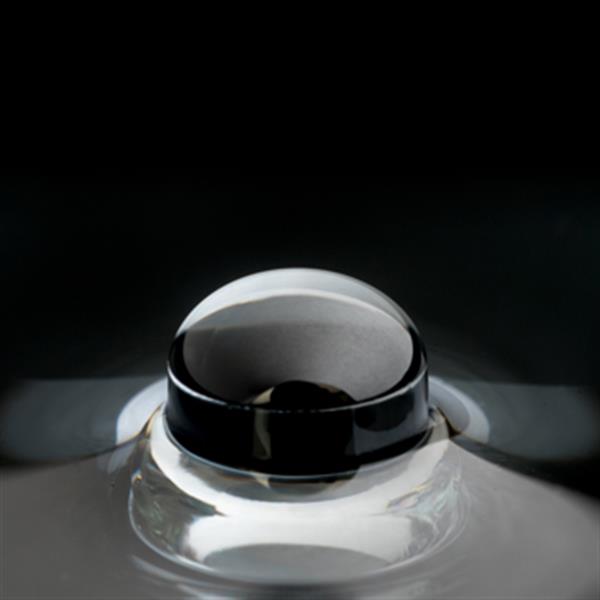Northwestern’s McCormick School of Engineering has developed a new method for 3D printing high quality lenses for use in optical imaging devices. Applications of the technology include customised contact lenses or smartphone lens attachments.
Researchers 3D printed a lens measuring 5 mm in height and 3 mm in diameter in just four hours. Traditional methods of lens production involve costly and time consuming cutting and polishing processes that can last weeks.
Visible stepping
The researchers’ first attempt 3D printed the lens in a photo-curable resin, but the curved shape created visible stepping. Cheng Sun, associate professor of mechanical engineering, said that “layer thickness is typically 5 microns, while the wavelength of visible light is around 0.5 micron,” this creates an “optically rough surface” that made the lens unsuitable for clear optics.
3D printing smooth optical surfaces
Xiangfan Chen, a PhD candidate in mechanical engineering said that aftering trying “more than 100 times to get this just right”, researchers developed a two-step process of 3D printing and polishing. Sun says “we used grayscale images to create more transitions between steps, then, we coated the surface with the photo-curable resin. That then forms the meniscus that further smooths the surface.”
The process yields a transparent lens with surface roughness of less than 7 nanometers, 3D printed in four hours.
Referring to Nanoscribe’s 3D printed micron-scale lenses, Sun said Nanoscribe’s main limitation is the time required, “we wanted to make something comparable but faster and with better quality. With 3D printing, now you have the freedom to design and customize a lens quickly.”

Scaling up
The researchers are currently working on scaling their method up to larger lenses, and applications in medical devices, such as optical microscopes.
The lens has potential applications for doctors in areas where advanced optics are unavailable, or where use as a smartphone camera attachment could help with disease diagnosis. Sun also envisions the lenses being made into customised contact lenses for people with distorted corneas caused by keratoconus, a condition causing the progressive warping and thinning of the cornea.
Belgian company Luxexcel, were the first company to produce 3D printed optical lenses. In November last year they opened two facilities in the U.S. capable of making custom eyeglasses catering to a variety of ophthalmic conditions.

For 3D printing related research and news subscribe to the 3D Printing Industry newsletter, follow us on Twitter, and like us on Facebook.
Looking to get involved in a new project? Join the 3D printing jobs board.
Vote in the 2018 3D Printing Industry Awards for the Academic/research team of the year.
Design the trophy for the chance to win a Wanhao Duplicator 9 3D printer. Enter the 2018 3D Printing Industry Awards design competition, sponsored by Protolabs. Closes March 31.
Featured image shows the lens 3D printed by researchers at Northwestern Engineering. Photo via Northwestern Engineering.


